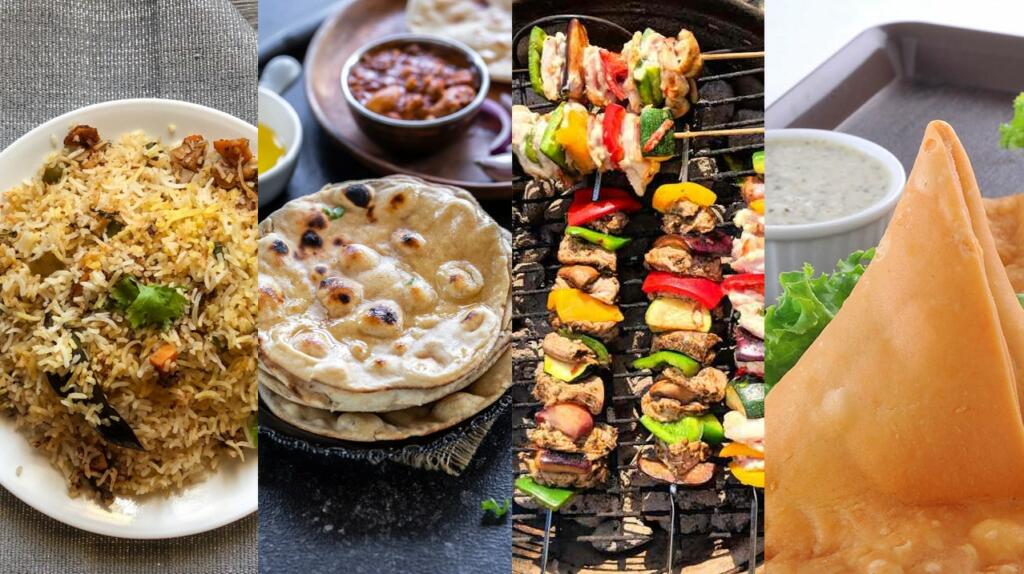The Mughal rule in parts of India was dominated by constant wars and unsuccessful missions to assert pan-India leadership. But if there is something that Mughals succeeded in was cultural appropriation. This is the biggest effect of the Mughal era in the country. And the stress on ‘Mughal cuisine’ is the biggest example of cultural appropriation.
Glorification of Mughlai cuisine in popular culture
Take a look at this video link from the Bemisal movie. Jump to @12:04 and you will find Amitabh Bachchan saying, “All hill stations in India were discovered by the British, it is only Kashmir which was discovered by the Mughals”.
Yes, apparently Indians didn’t know of the Himalayas before the Mughals came. And no one knows how they came to know of the Chardhams in the Himalayas. And also, Mughals discovered Kashmir and for some strange reason decided to name it after Rishi Kashyapa.
Also Read: In Kashyapa Rishi’s Kashmir, Sanskrit chants will be heard again
But the Bemisal movie scene doesn’t end here. Rakhi replies, “Mughals are unparalleled. Just take a look at their music, their paintings, their architecture….” At this point, Amitabh Bachchan says but you forget their real contribution- Mughlai cuisine. This is how Mughlai cuisine has been glorified for several centuries. So, let’s debunk the myths around the contribution of Mughlai cuisine to India.
Kebabs and grilled meat
The popular perception is that Mughals brought kebabs to India. Some even claim that they popularised non-veg delicacies in the country.
But if you go through Indian history, you will find several instances of hunting by popular kings like Raja Dashrath, Raja Dushyant and Raja Parikshit who was the son of Abhimanyu and Uttara. There was actually a glorious mrigaya (hunting) tradition in India. Now, if kings in ancient India were hunting hog deer, wild boar, chinkara and blackbuck, it actually means that they ate meat.
Monarchs used to go on big game hunting. Partridge, duck, and quail too were popular as a winged quarry. Indians definitely knew of barbecued meat much before the origin of Mughals and it was actually popular amongst Kings and their armies.
Biryani
Now, this is an emotional tool that left-liberals love to use. They will tell you Mughals gave us architecture, even though India had some of the most magnificent structures built in the pre-Mughal era. They will then tell you that Mughals gave us literature, but even they can’t deny that India gave birth to the Vedas, Smritis, Puranas, the Ramayana, the Mahabharata, and many other globally acclaimed works of literature before the Mughals stepped into the country.
So, they will often come up with the biryani jibe. They claim Mughals gave us biryani. Really though? Remember, Mughals came from Central Asia, an extremely arid region where the traditional cuisine has more or less a bland character. They had no paddy cultivation at the place of their origin. So, how could they have invented biryani without its most basic ingredient- rice?
And what about the spices? Biryani is full of spices. All the spices originated from India and China, and there were no spices in Central Asia. And still, it is claimed that Mughals brought biryani to India.
Tandoori Roti (Bread)
Any average menu has dozens of tandoori roti options and the so-called food historians have credited the invention of tandoori bread to the Mughal era.
But in Rajasthan’s Mewar has been cooking in furnaces for cooking for several millennia now. In the Mughal era, the shape of tandoor as we see it today may have come into being, but that doesn’t mean that tandoor-cooking or furnace-cooking was alien to pre-Mughal India.
Samosa
Yes, even samosas are often appropriated as a Mughlai dish. But again, samosa is not Mughlai cuisine. Samosa wasn’t known to any part of the world including India till the 10th century.
Samosas however came into being in the 10th century Middle East. The first formal account of the popular snack was found in Iranian historian Abolfazl Beyhaqi’s work Tarikh-e Beyhaghi. It is referred to as ‘Sambosa’ in that work. Samosa actually pre-dates Mughals.
Indians were cultivating different crops, vegetables, exploring the world of spices and hunting animals much before the Mughals came into being, whereas Central Asia was an arid, inhospitable region. But if so-called food historians are to be believed, Mughals with all their culinary skills came all the way from Central Asia and told Indians how they could use what they were growing or hunting for making food.
Yet, in Southern parts of India, where Mughals never became much influential, you do not find even a trace of the overhyped Mughlai cuisine. This is what the reality of Mughlai cuisine is- a sham. And its effect doesn’t go much beyond sheer cultural appropriation.
